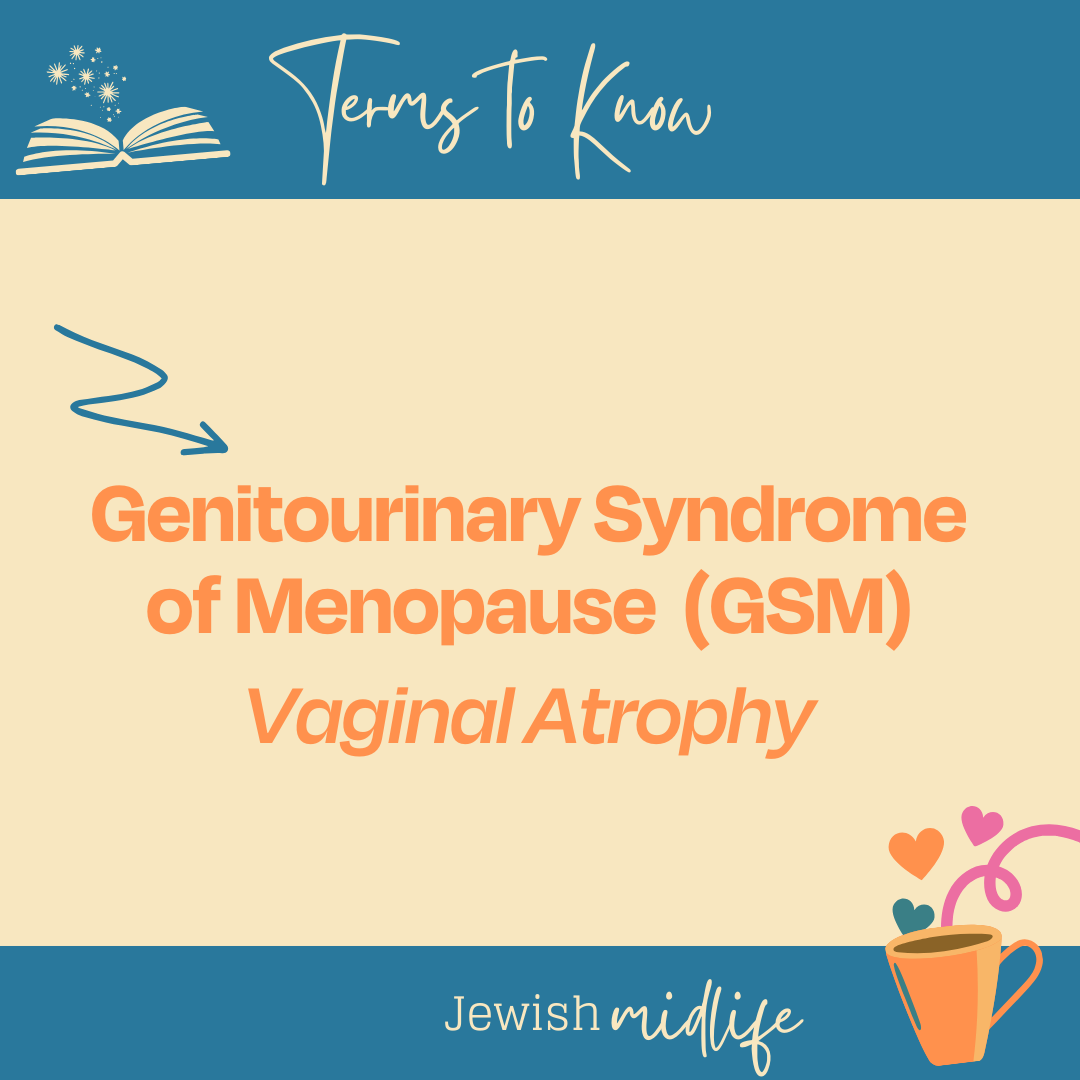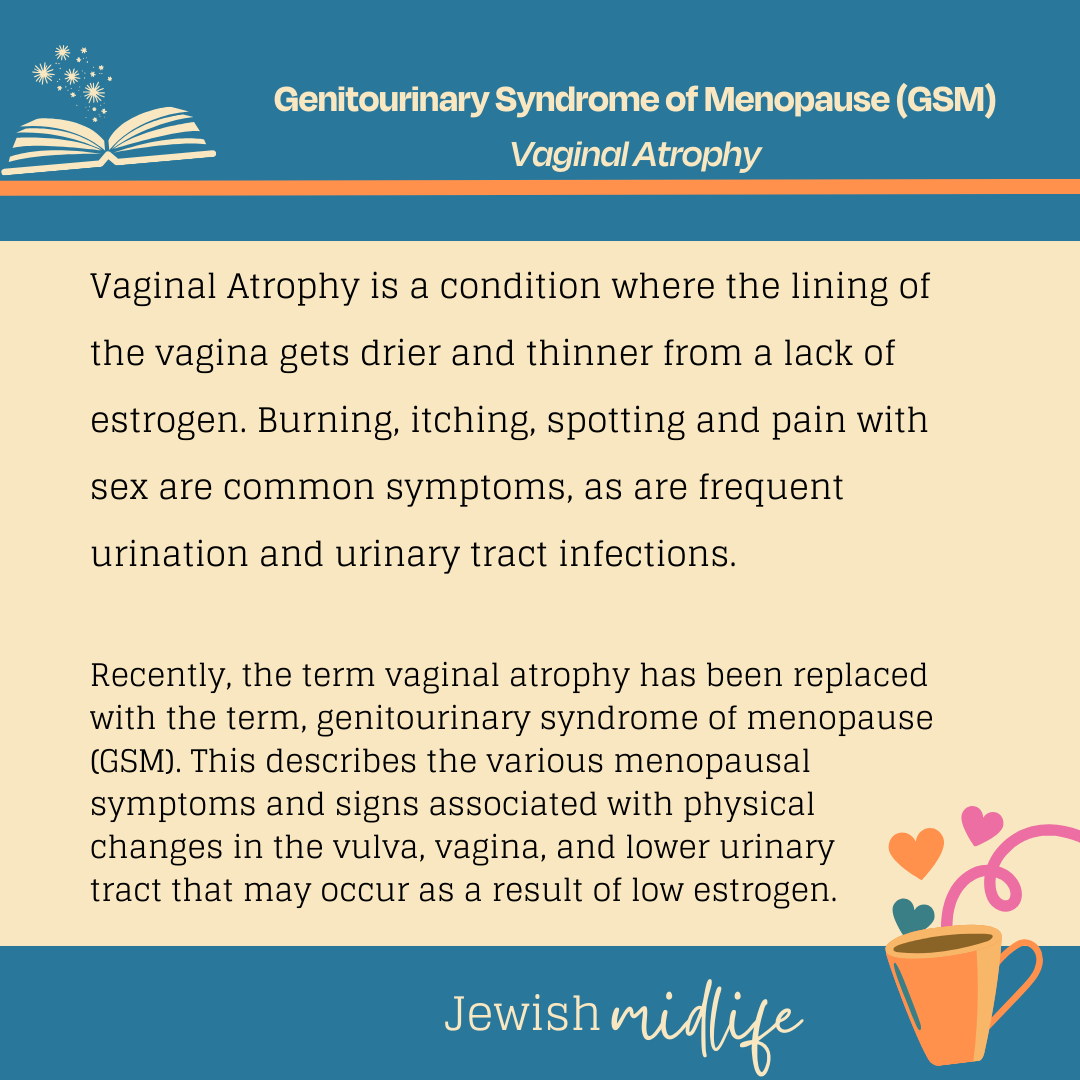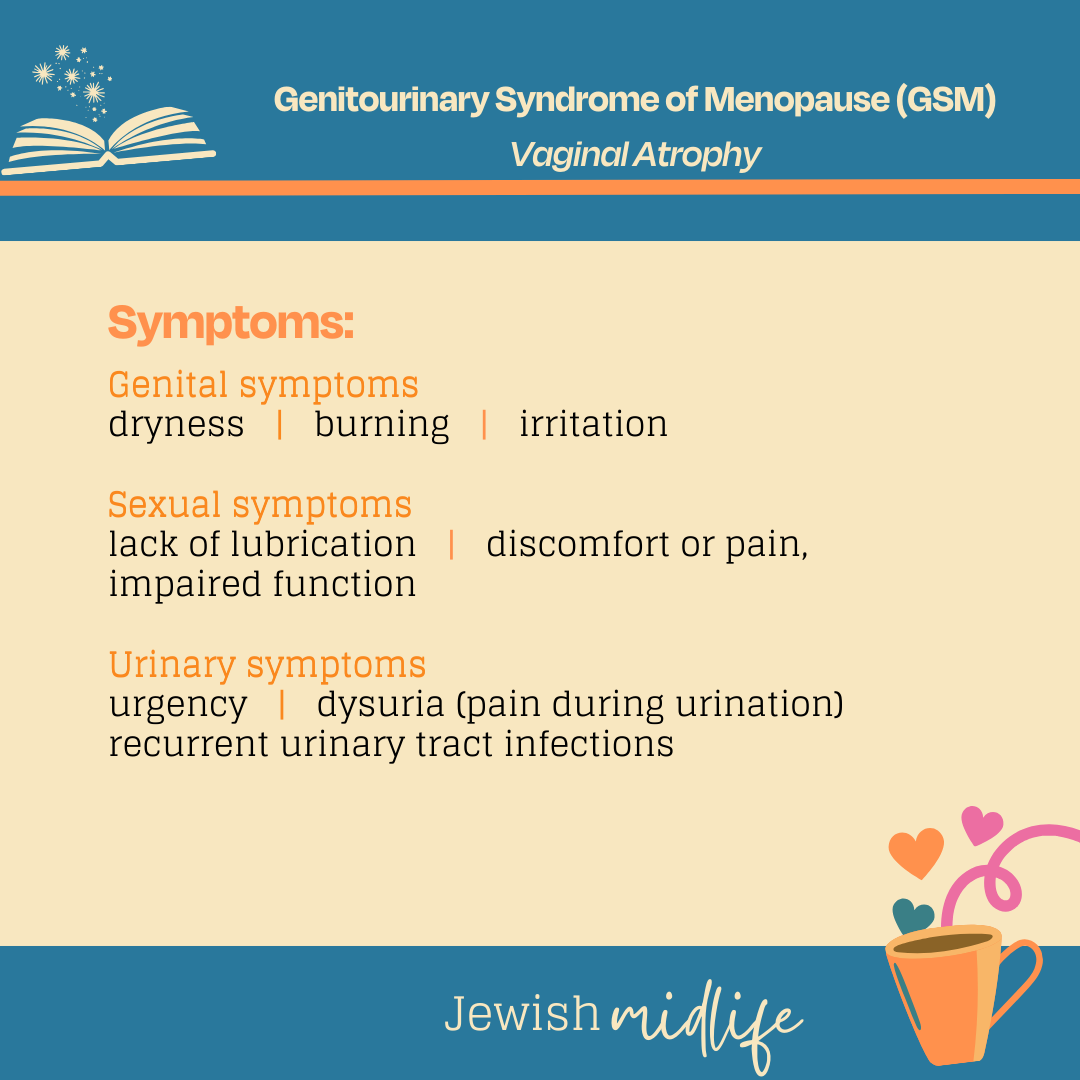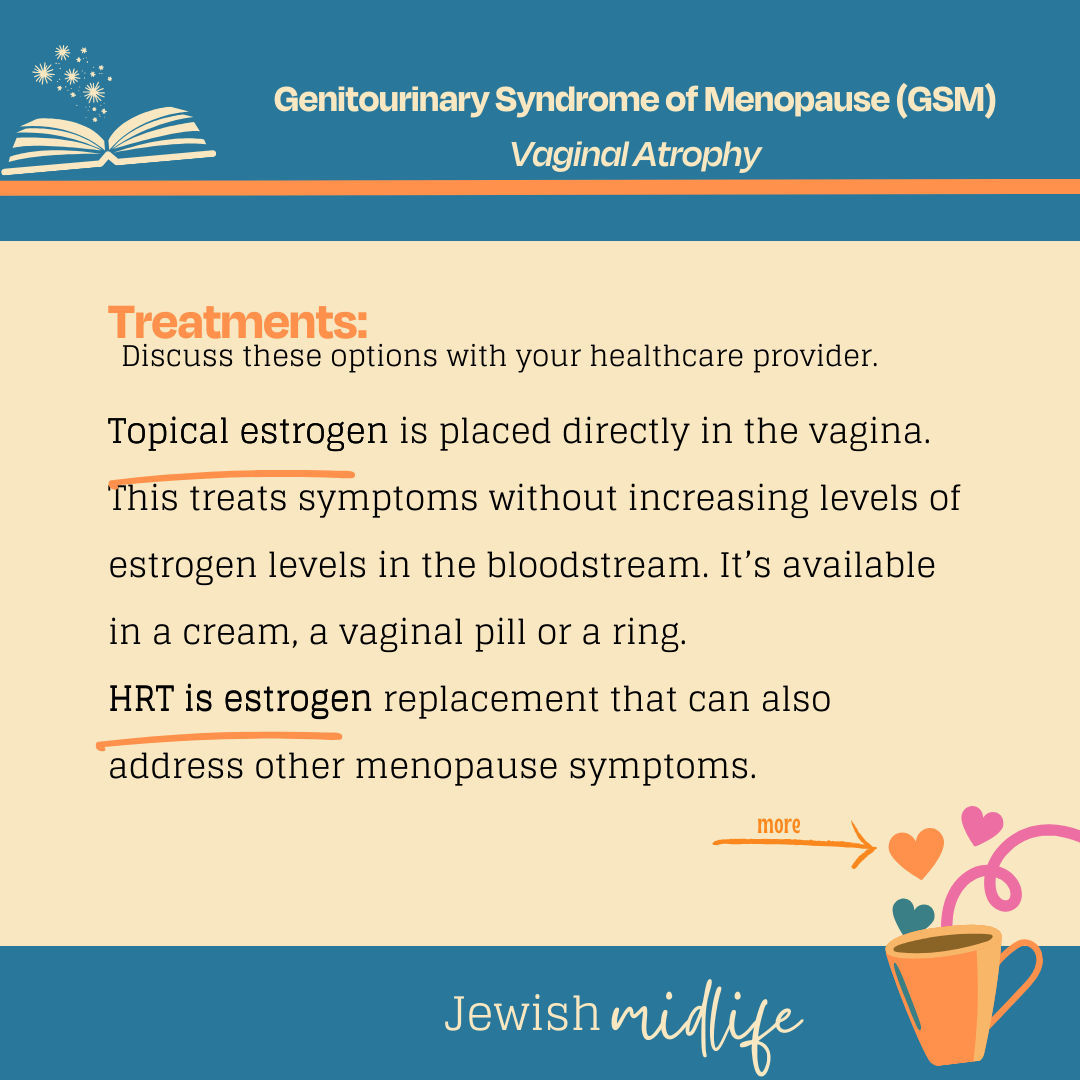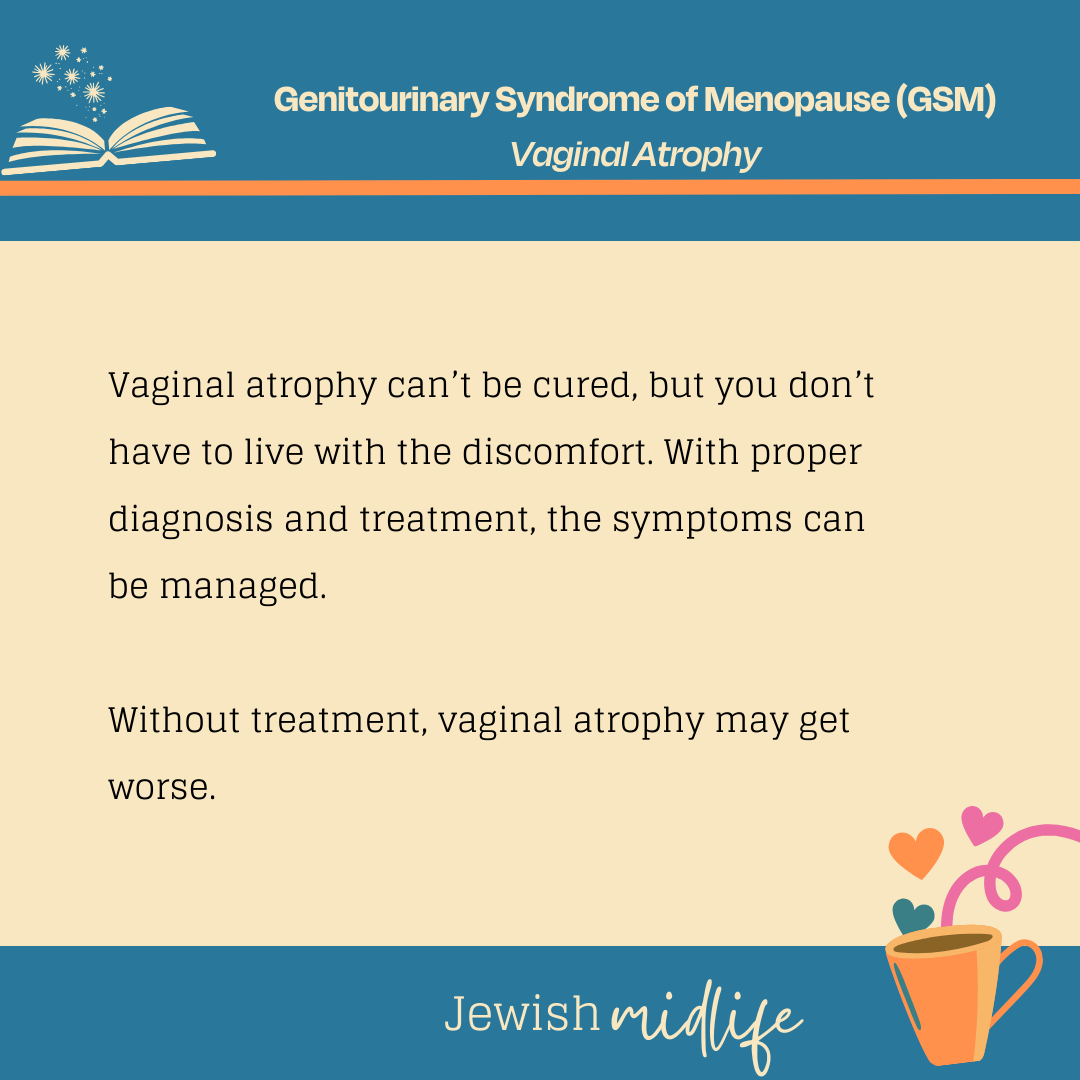Genitourinary Syndrome of Menopause (GSM), also known as Vaginal Atrophy is a condition where the lining of the vagina gets drier and thinner from a lack of estrogen. Burning, itching, spotting and pain with sex are common symptoms, as are frequent urination and urinary tract infections.
Recently, the term vaginal atrophy has been replaced with the term, genitourinary syndrome of menopause (GSM). This describes the various menopausal symptoms and signs associated with physical changes in the vulva, vagina, and lower urinary tract that may occur as a result of low estrogen.
Symptoms:
Genital symptoms: dryness | burning | irritation
Sexual symptoms: lack of lubrication | discomfort or pain | impaired function
Urinary symptoms: urgency | dysuria (pain during urination) | recurrent urinary tract infections
Treatments:
Vaginal atrophy can’t be cured, but you don’t have to live with the discomfort. With proper diagnosis and treatment, the symptoms can be managed. Without treatment, vaginal atrophy may get worse.
Discuss these treatments with your healthcare provider.
Topical estrogen is placed directly in the vagina. This treats symptoms without increasing levels of estrogen levels in the bloodstream. It’s available in a cream, a vaginal pill or a ring.
HRT is estrogen replacement that can also address other menopause symptoms.

